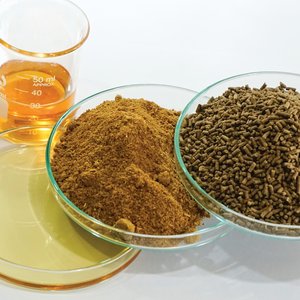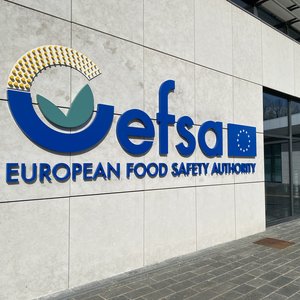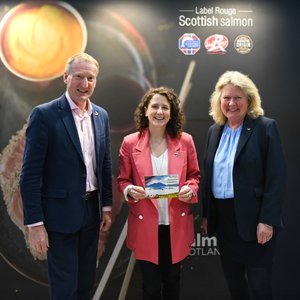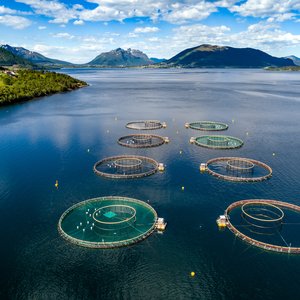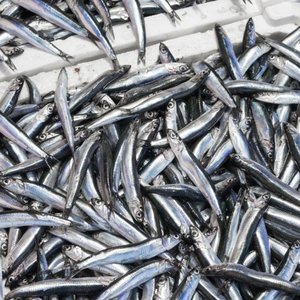Just days before the United Nations led International Mercury Treaty negotiation sits, a new scientific report finds that humans and marine ecosystems around the world are contaminated with mercury and that mercury levels in humans and fish regularly exceed health advisory guidelines. The report, a collaboration between IPEN and Biodiversity Research Institute (BRI), highlights the urgent need for an overall reduction in mercury emissions when government delegates convene in Geneva in their final negotiating session for an international mercury treaty - the first global treaty on the environment in more than a decade by the United Nations Environment Programme.
\\\\r\\\\n
The report, Global Mercury Hotspots, brings together new data on mercury concentrations in fish and human hair samples and identifies, for the first time, a set of global biological hotspots where elevated levels of mercury are sufficient to pose serious threats to both ecosystems and human health.
\\\\r\\\\n
The report shows mercury contamination is ubiquitous in marine and freshwater systems around the world. Fish samples regularly have mercury concentrations exceeding U.S. Environmental Protection Agency (EPA) human health advisory guidelines. In the study, 43 to 100 percent of fish samples from 8 countries exceeded safe consumption of one fish meal of 170 grams (6 ounces) per month. Mercury concentrations in fish from sites in Japan and Uruguay were so high that the report recommended zero consumption.
\\\\r\\\\n
More than 82 percent of human hair samples from 8 countries exceeded U.S. EPA reference dose levels of 1.0 ppm. In Thailand, 20 out of 20 individuals living near an industrial site had unsafe levels; 19 out of 20 Indonesians at a gold mining site exceeded EPA recommended levels and 18 out of 20 individuals in Tokyo, Japan had similarly high levels.
\\\\r\\\\n
Large, intentional uses of mercury include small-scale gold mining, coal combustion, and vinyl chloride monomer production. Much of the mercury produced and used eventually volatizes into the atmosphere and travels around the globe, eventually falling back to the earth or ocean, the report states.
\\\\r\\\\n
A scientific opinion was delivered December 2012 by the European Food Safety Authority (EFSA)\\\\\\\\\\\\\\\\\\\\\\\\\\\\\\\'s Contaminants in the Food Chain (CONTAM Panel) on the risks to human health related to the presence of inorganic mercury and methylmercury in food. The report concluded the estimated exposure to inorganic mercury in Europe from diet alone does not exceed recommended levels, however inhaled elemental mercury vapour from dental amalgam, which after absorption is converted to inorganic mercury, is an additional source that is likely to increase the internal inorganic mercury exposure and might push exposure over the established safety levels.
\\\\r\\\\n
EFSA received 59,820 results on mercury in food from 20 European countries, mainly covering the period from 2004 to 2011. A total number of 59,650 results were described with sufficient detail to be used in the statistical analysis of various food groups; 98.2 % of the samples were for total mercury, 1.8 % for methylmercury and three samples for inorganic mercury.
\\\\r\\\\n
\\\\\\\\\"Fish and other seafood’ and ‘Meat and meat products’ dominated the food product coverage with 36.8 % and 17.6 % respectively. These were followed by ‘Grain and grain-based products’ at 7.8 % and ‘Vegetables and vegetable products (including fungi)’ at 7.3 %. More than 60 % of the data were below the limit of detection (LOD) or the limit of quantification (LOQ) (left-censored (LC)) in 11 of the food groups. However, 12 % of the results for ‘Fish and other seafood’, which had the highest values of total mercury in comparison to all other food categories, were LC. The mercury content varied widely among different fish species, and was highest in predatory fish.
\\\\r\\\\n
The dietary exposure to methylmercury was based only on the food group ‘Fish and other seafood’ and since there was little difference between the lower bound (LB) and upper bound (UB) exposure estimates, the middle bound (MB) exposures were used. The mean MB methylmercury dietary exposure varied from the lowest minimum of 0.06 μg/kg b.w. per week seen in elderly and very elderly to the highest maximum of 1.57 μg/kg b.w. per week in toddlers. The 95th percentile MB dietary exposure ranged from the lowest minimum of 0.14 μg/kg b.w. per week in very elderly to the highest maximum of 5.05 μg/kg b.w. per week in adolescents. Based on mean concentrations of methylmercury in human milk, the dietary exposure to methylmercury for infants with an average human milk consumption ranged from 0.09 to 0.62 µg/kg b.w. per week and for infants with high milk consumption the dietary exposure ranged from 0.14 to 0.94 µg/kg b.w. per week
\\\\r\\\\n
Tolerable weekly intakes (PTWIs) established by the Joint FAO/WHO Expert Committee on Food Additives (JECFA) are 1.6 µg/kg body weight (b.w.) for methylmercury and of 4 µg/kg b.w. for inorganic mercury.
\\\\r\\\\n
The CONTAM Panel was also asked to assess human dietary exposure, taking into account specific sensitive groups and to consider the non-dietary sources of exposure to mercury species.
\\\\r\\\\n
Fish meat was shown to be the dominating contributor to methylmercury dietary exposure for all age classes, followed by fish products. In particular tuna, swordfish, cod, whiting and pike were major contributors to methylmercury dietary exposure in the adult age groups, while the same species, with the addition of hake, were the most important contributors in the child age groups. Dietary exposure in women of child-bearing age was especially considered and found not to be different from adults in general. The dietary exposure estimations in high and frequent consumers of fish meat (95th percentile, consumers only) was in general approximately two-fold higher in comparison to the total population and varied from a minimum MB of 0.54 μg/kg b.w. per week in elderly to a maximum MB of 7.48 μg/kg b.w. per week in other children.
\\\\r\\\\n
The EFSA report said non-dietary exposure to methylmercury is likely to be of minor importance for the general population in Europe, but exposure to elemental mercury via the outgassing of dental amalgam is believed to strongly contribute to the internal inorganic mercury exposure.
\\\\r\\\\n
Exposure to high levels of mercury can permanently damage the brain and kidneys. Harmful effects are also passed from a mother to her developing fetus and can result in brain damage, mental retardation, blindness, seizures and an inability to speak.
\\\\r\\\\n


